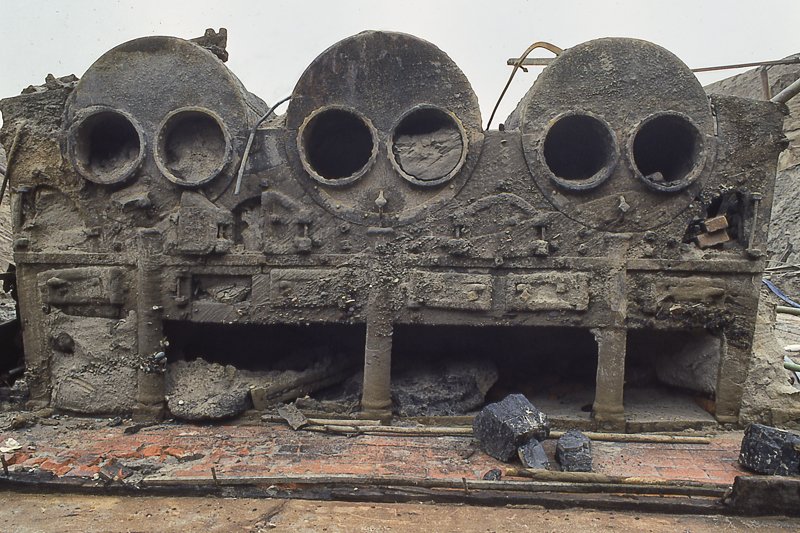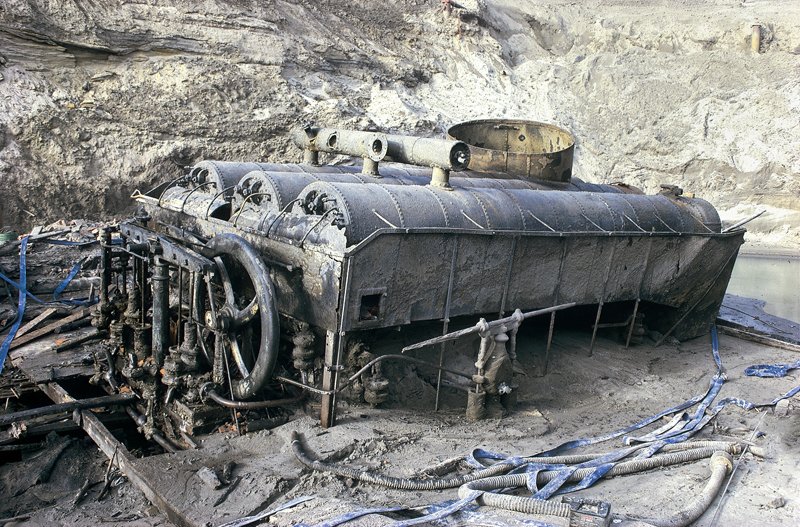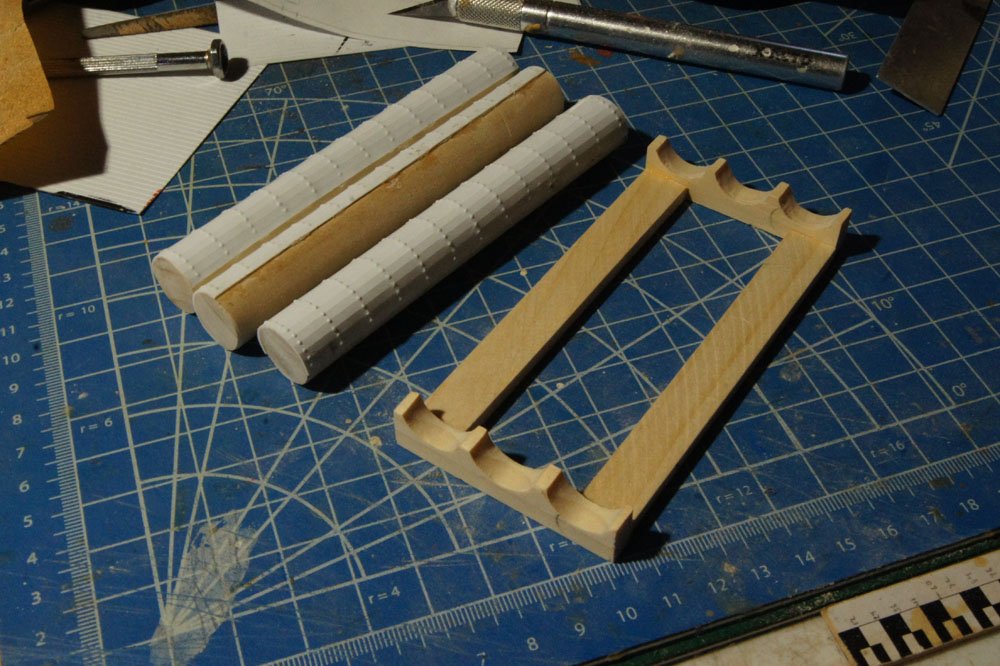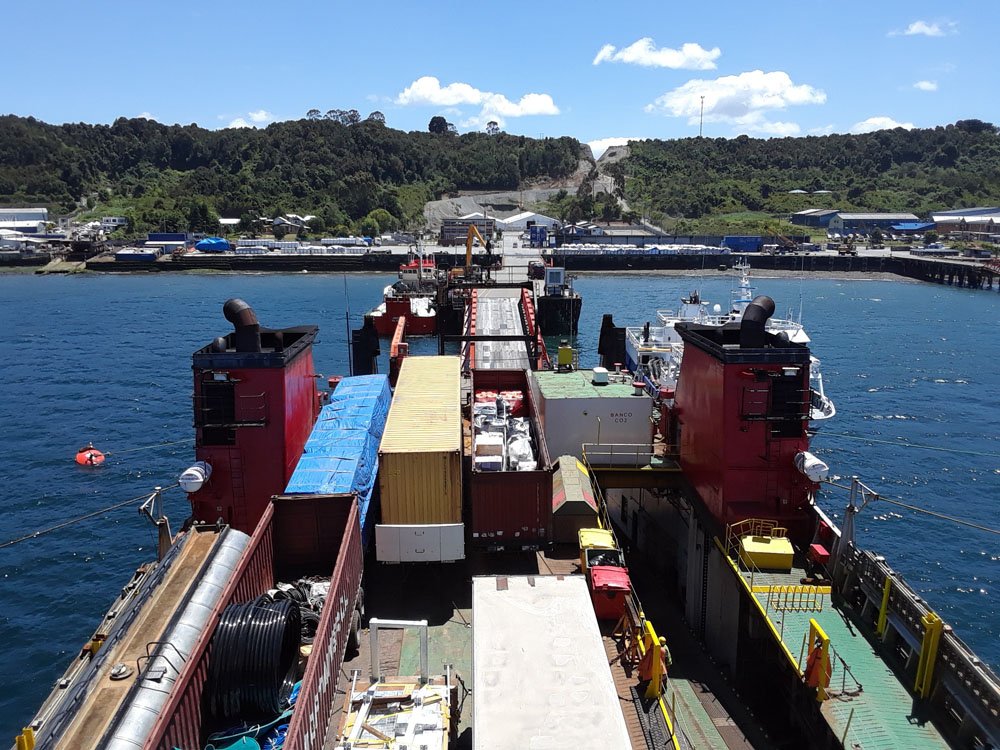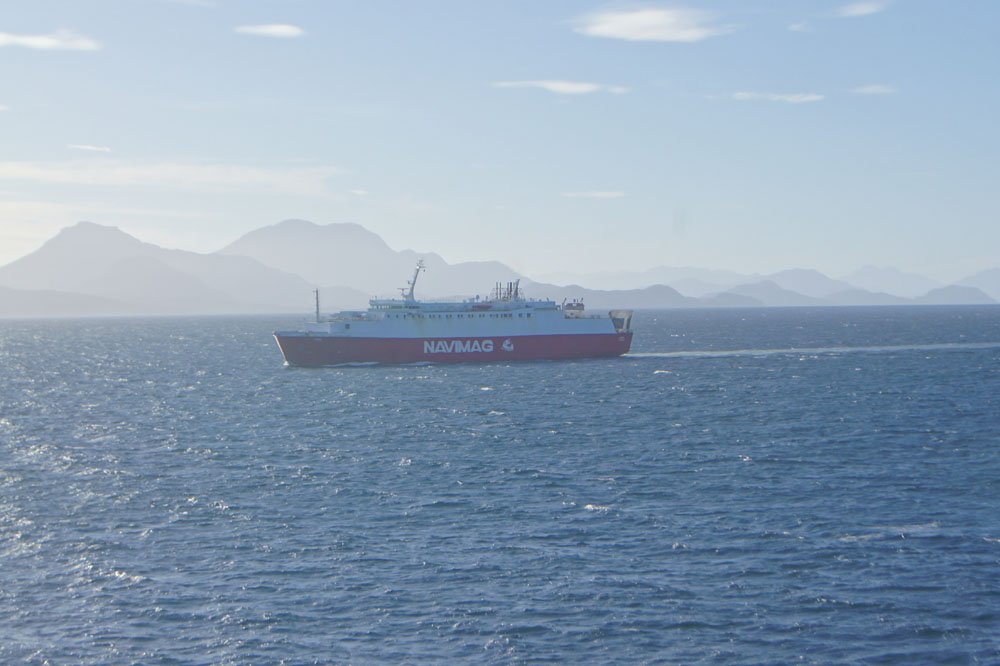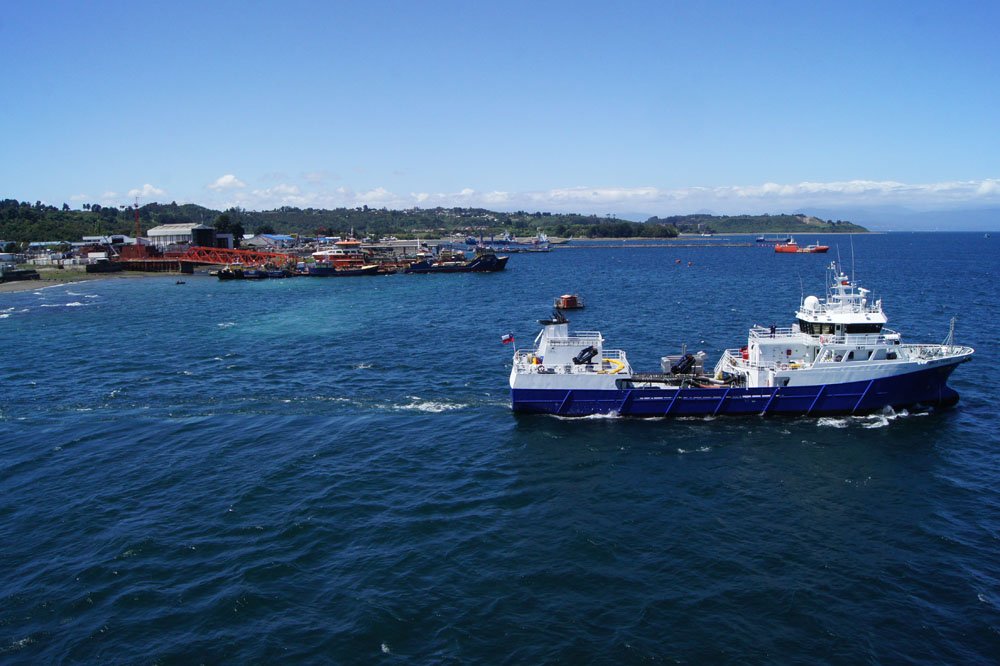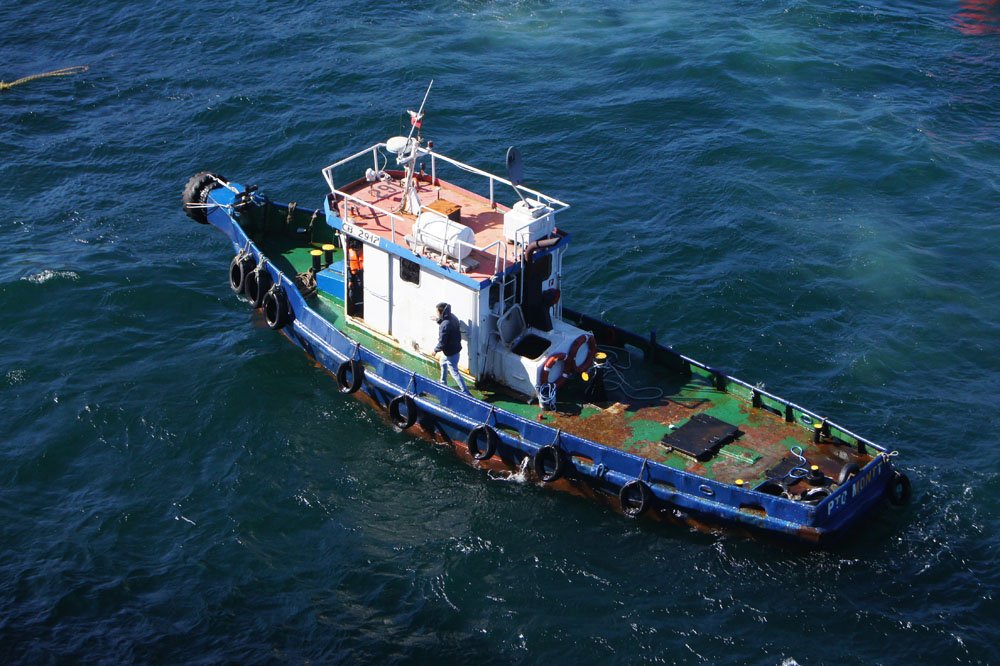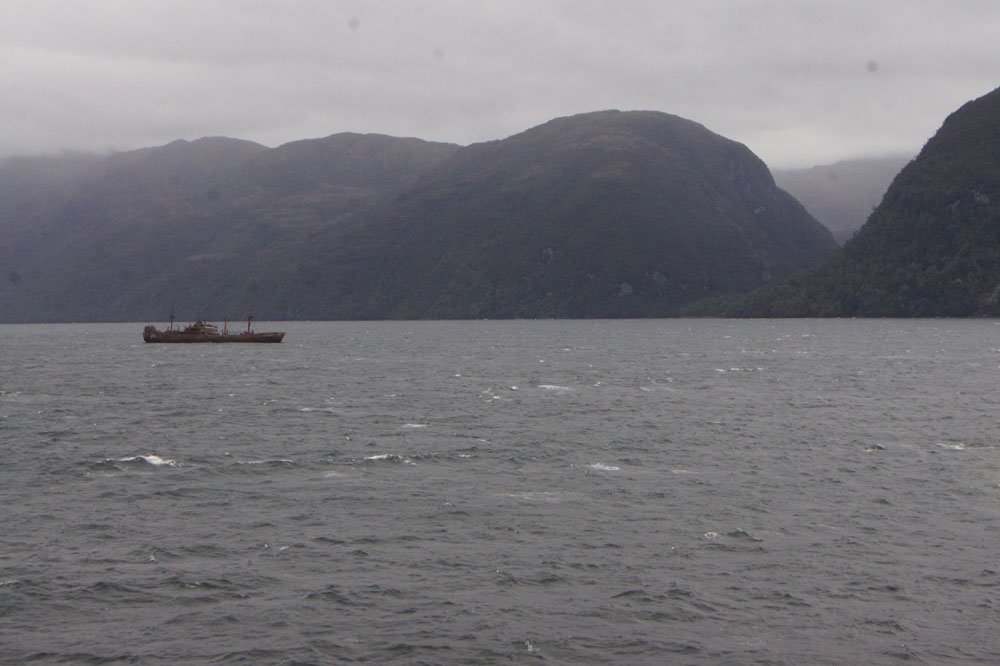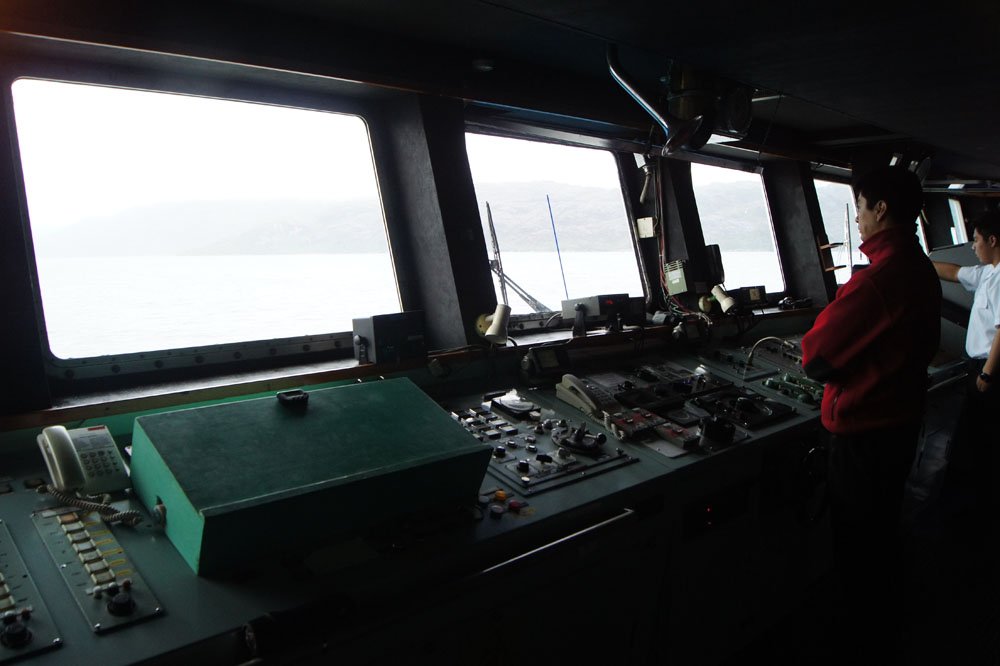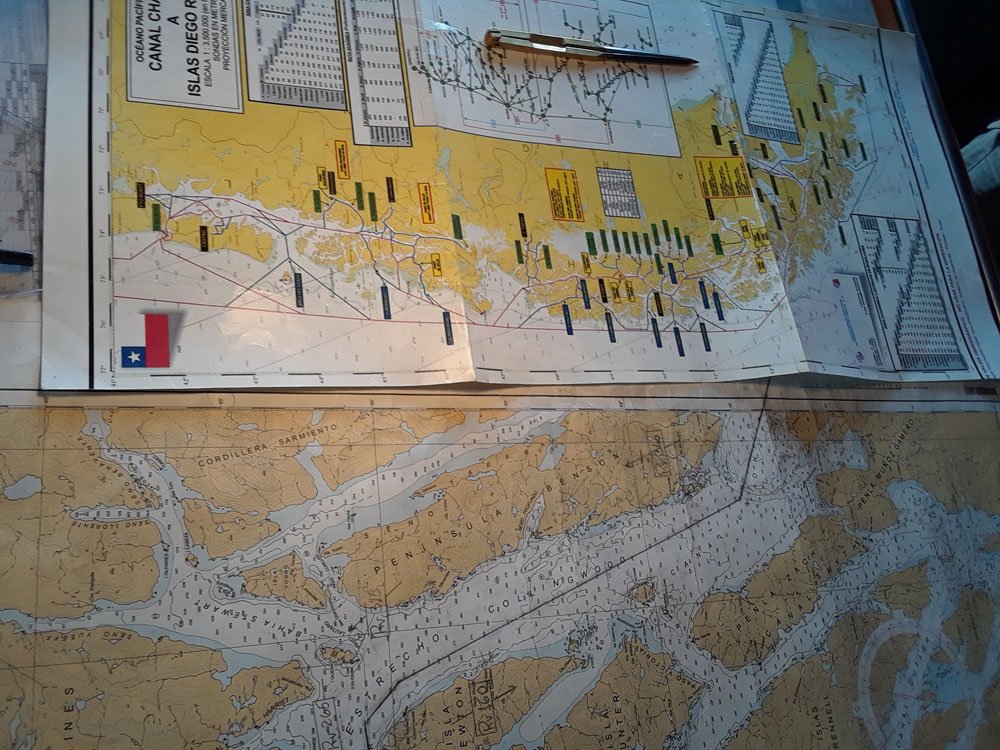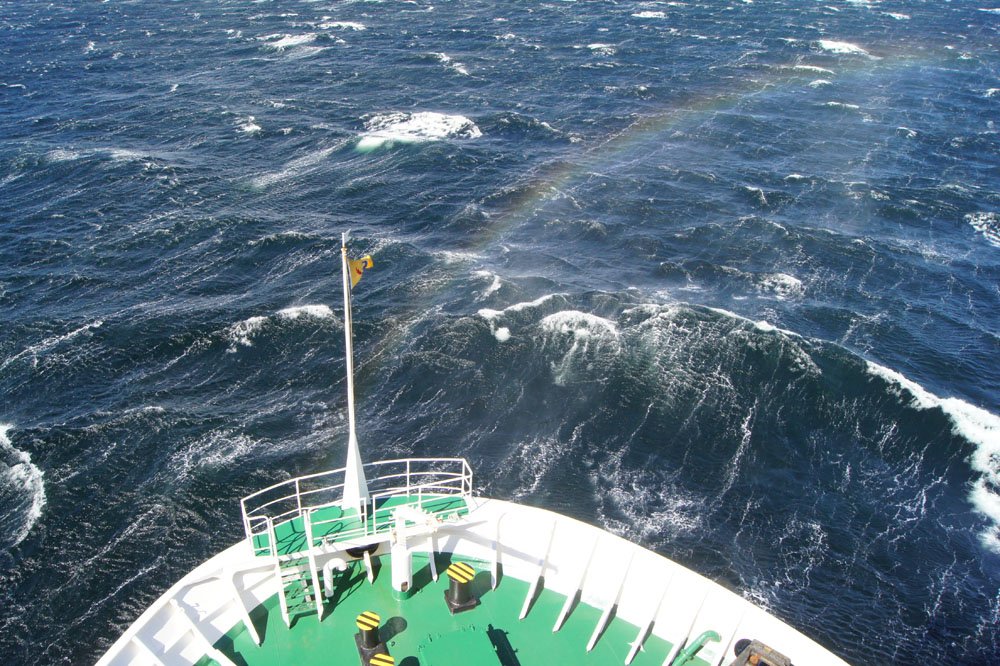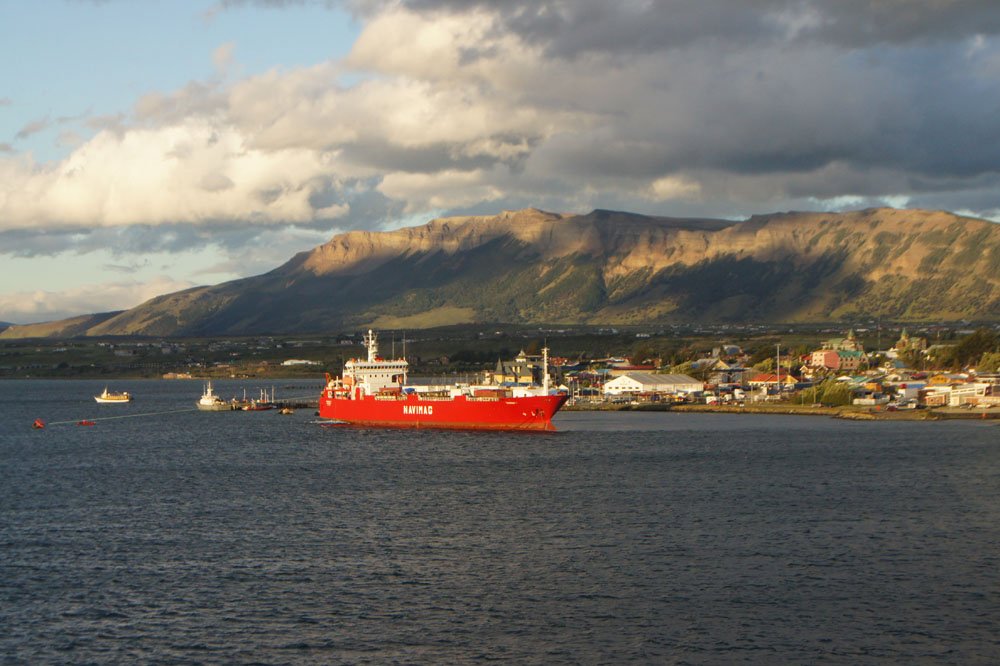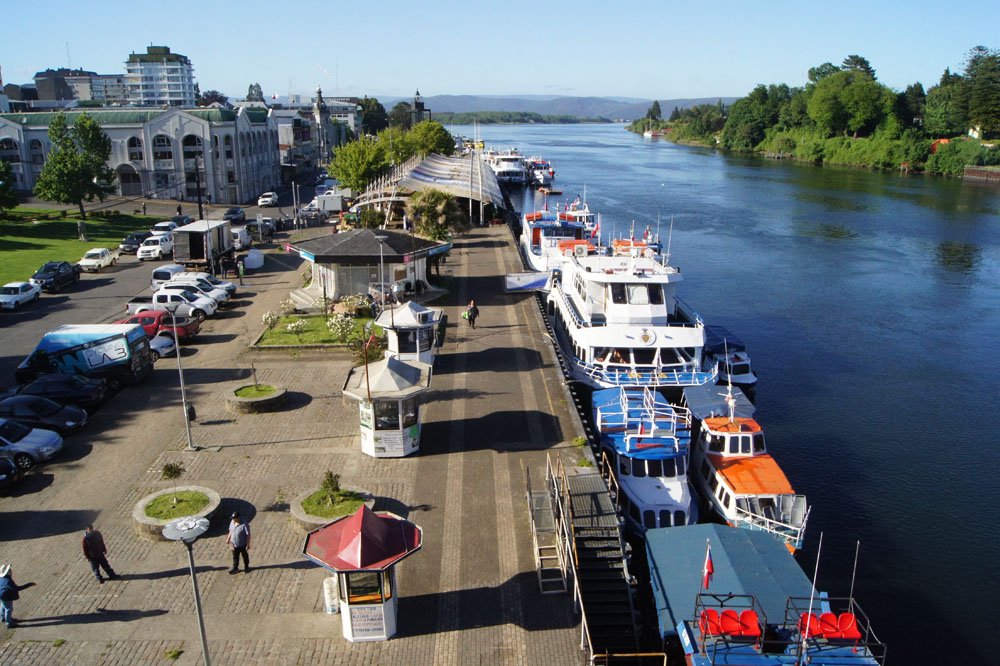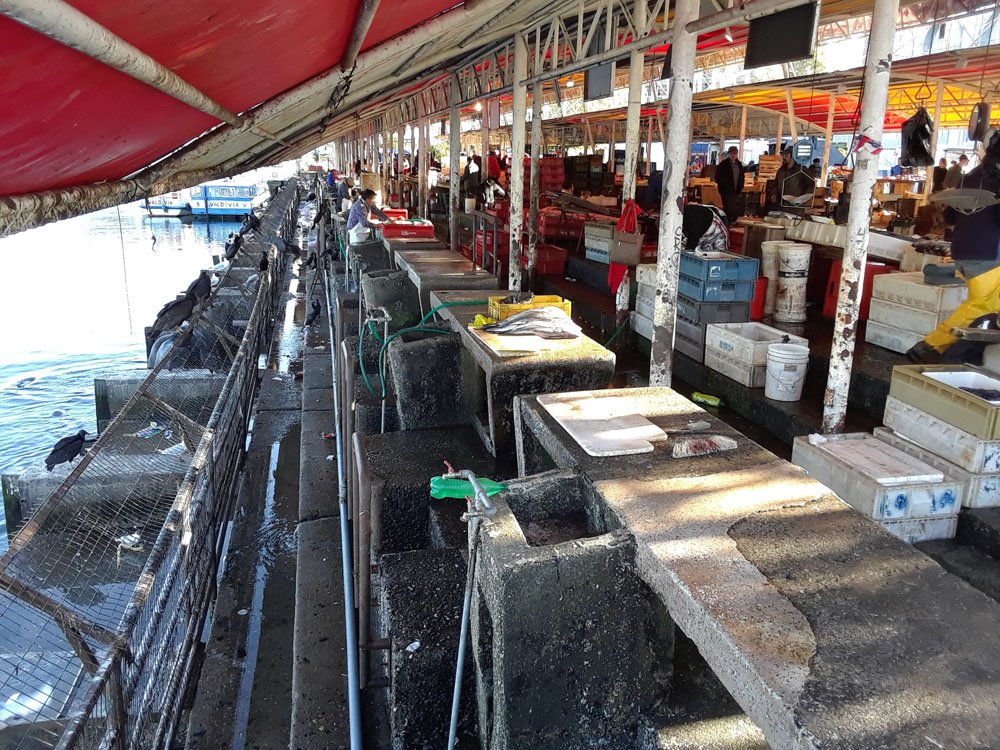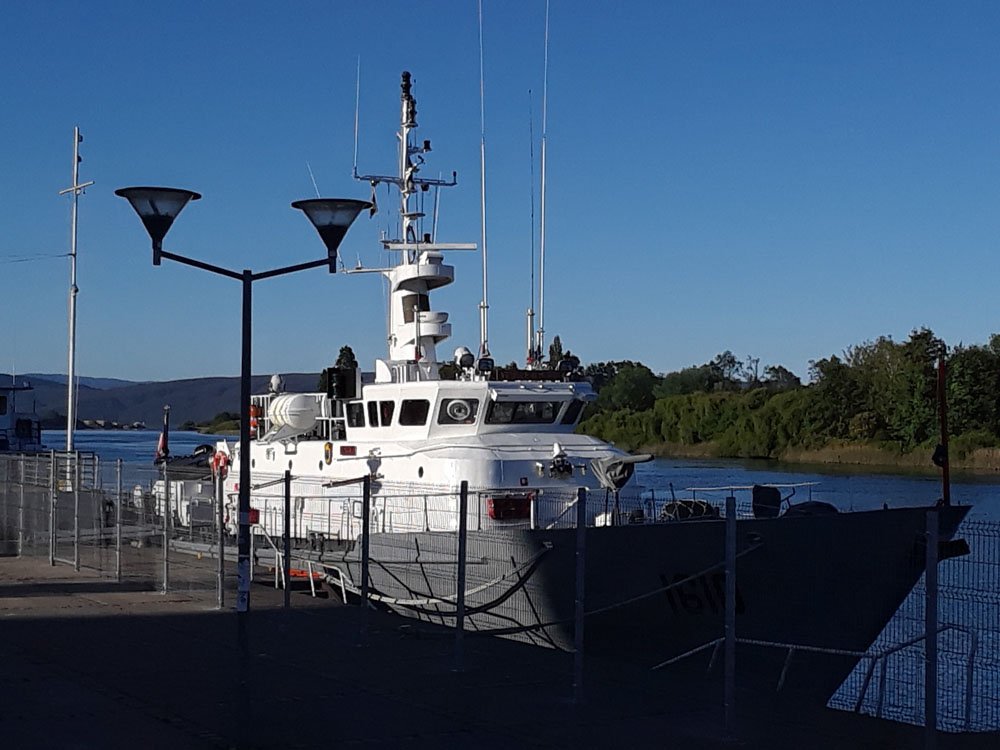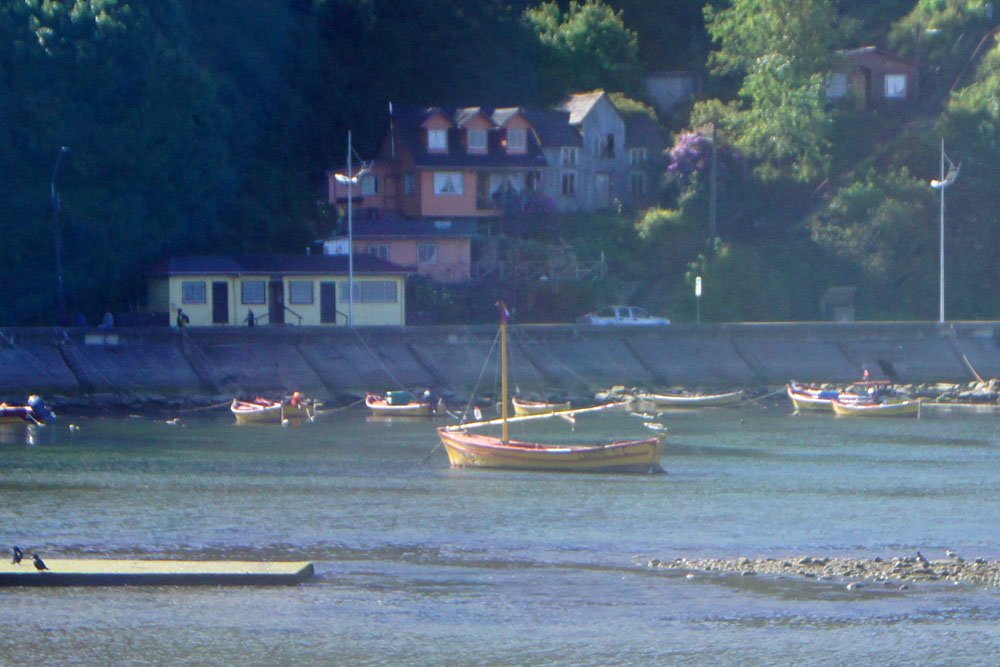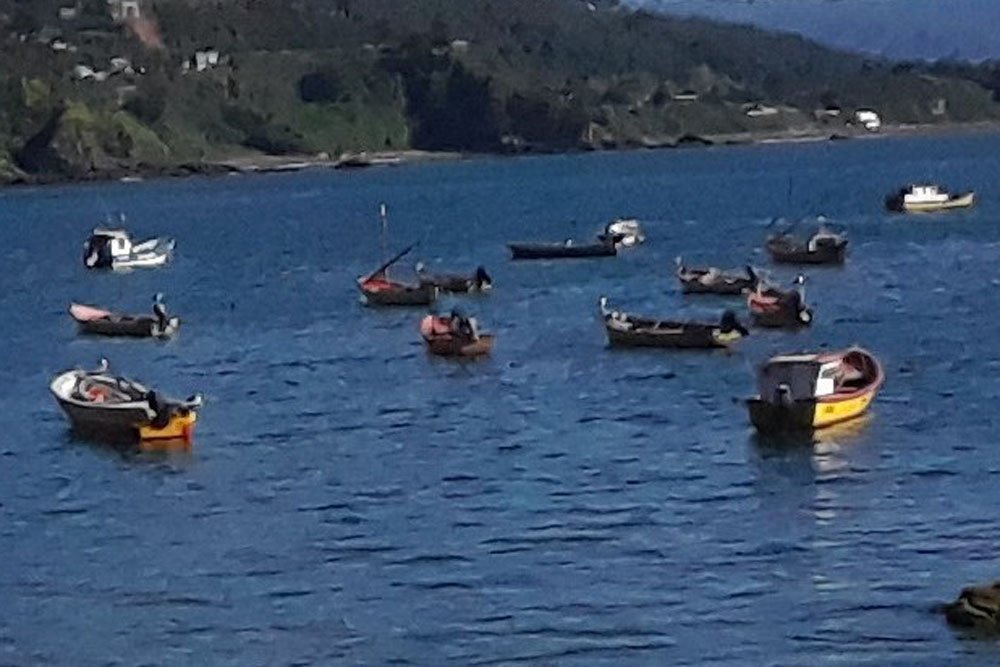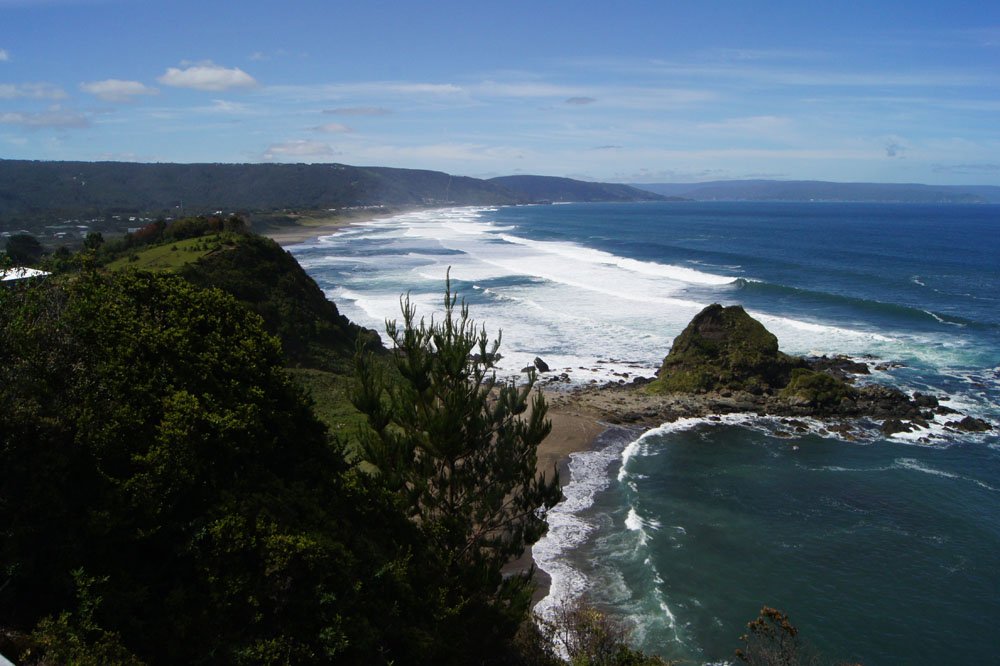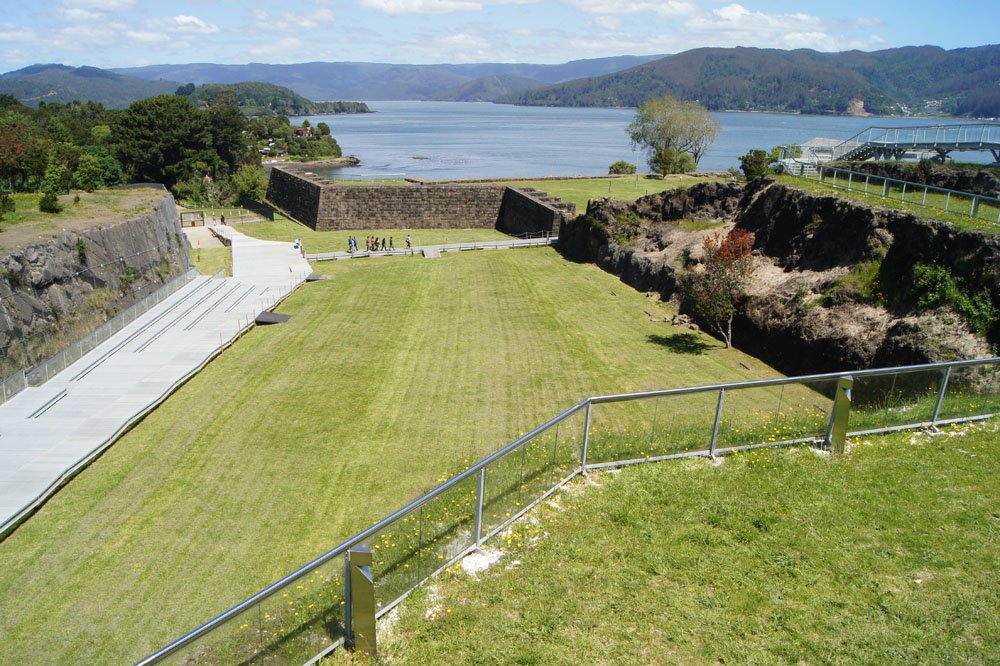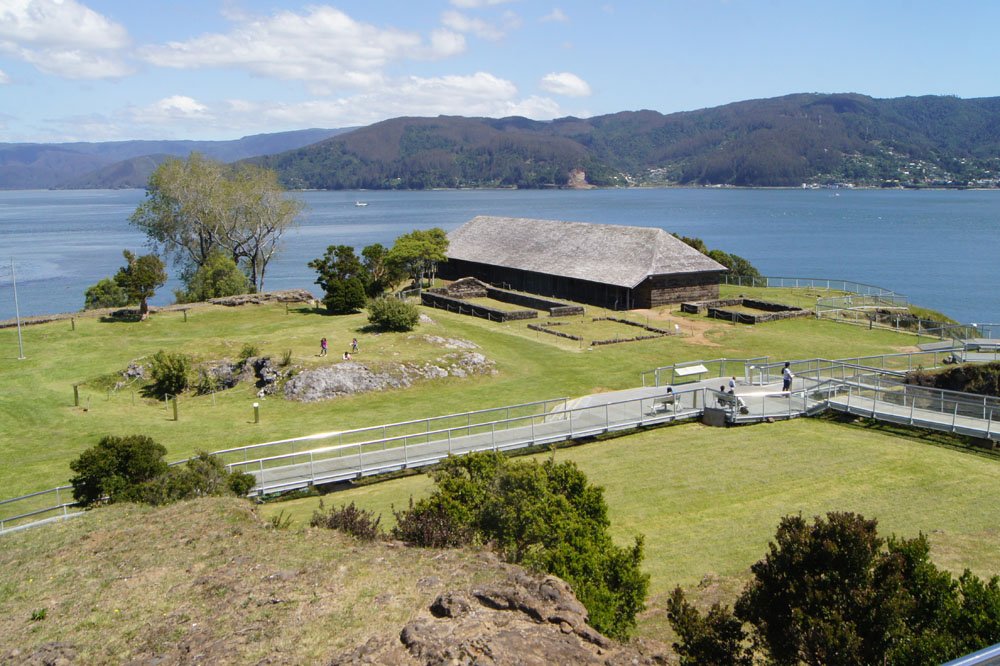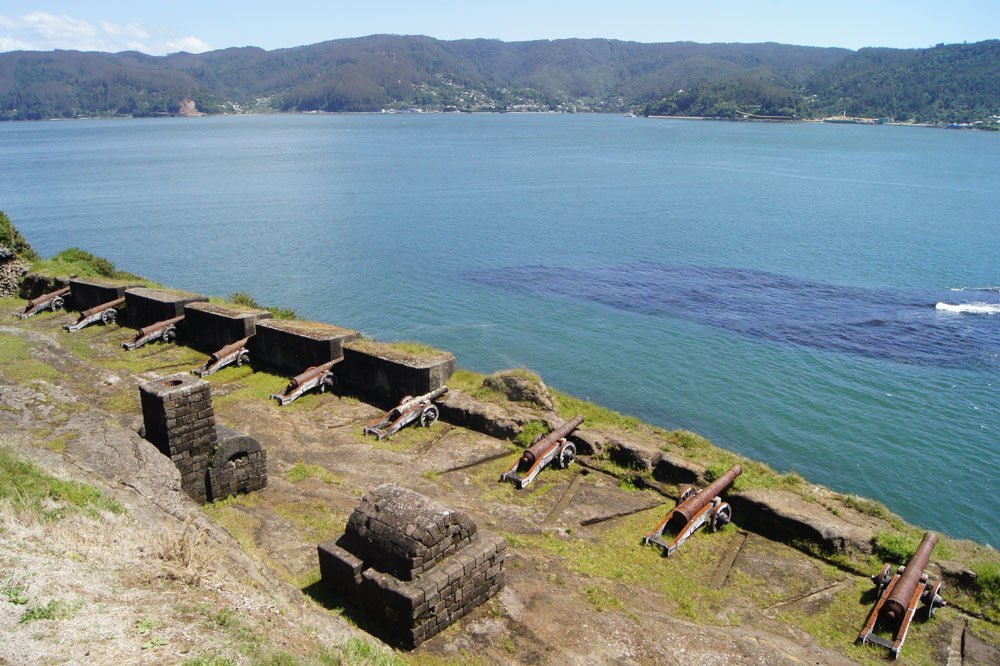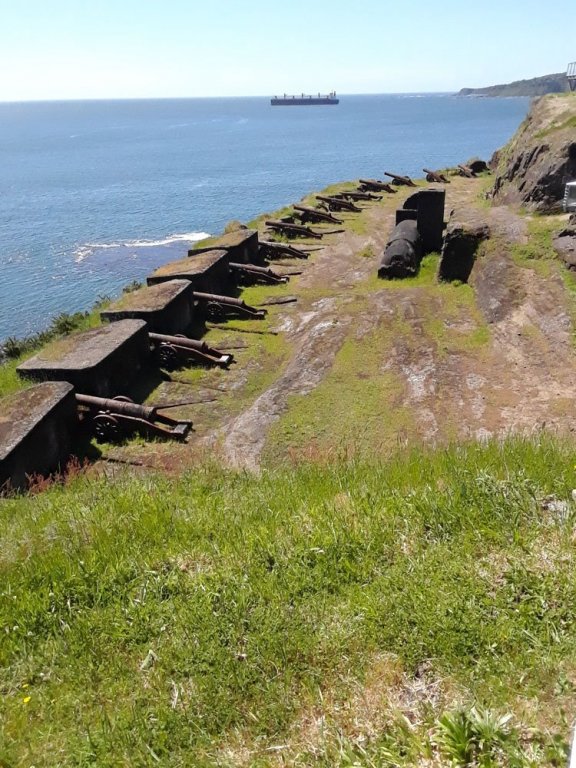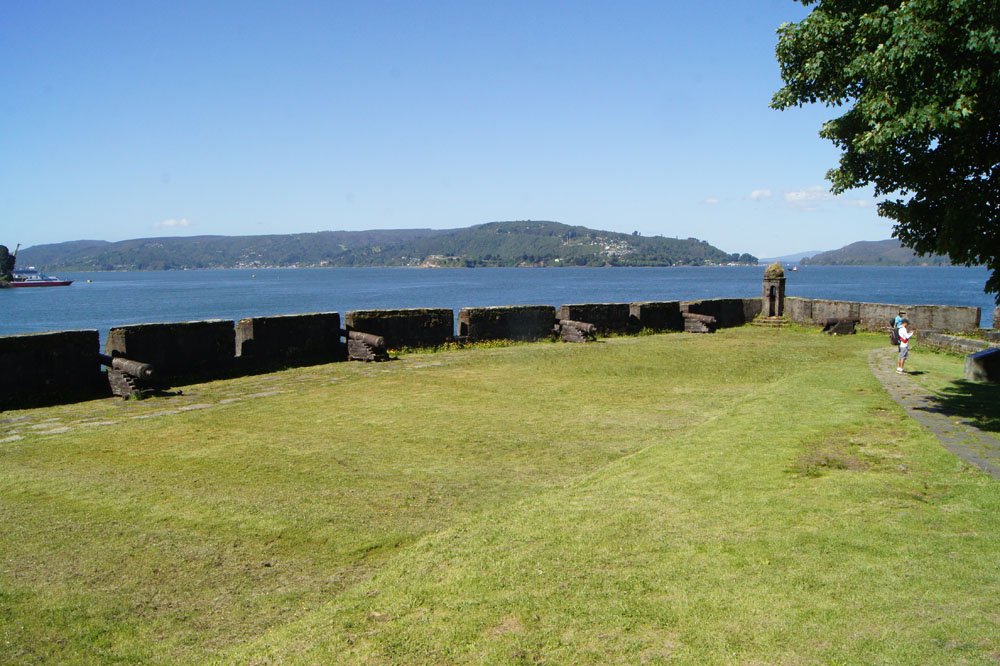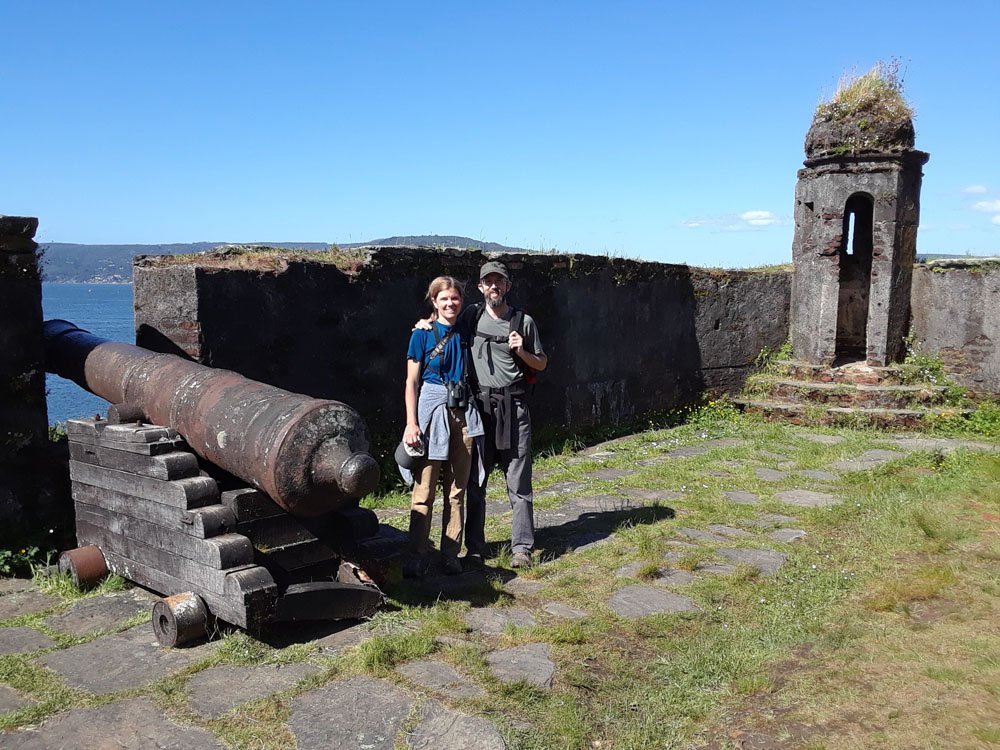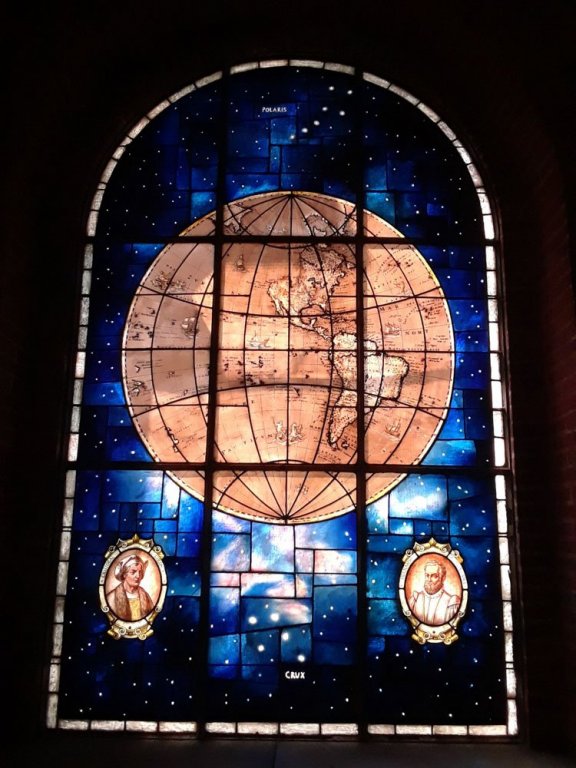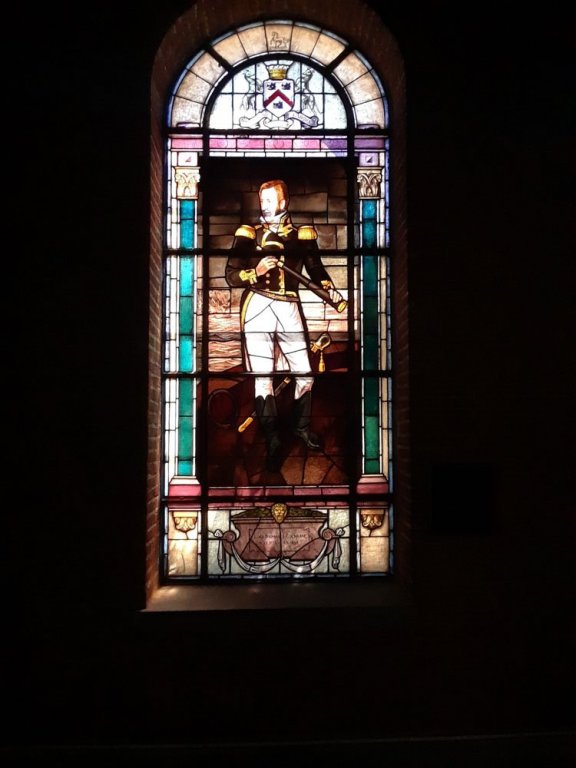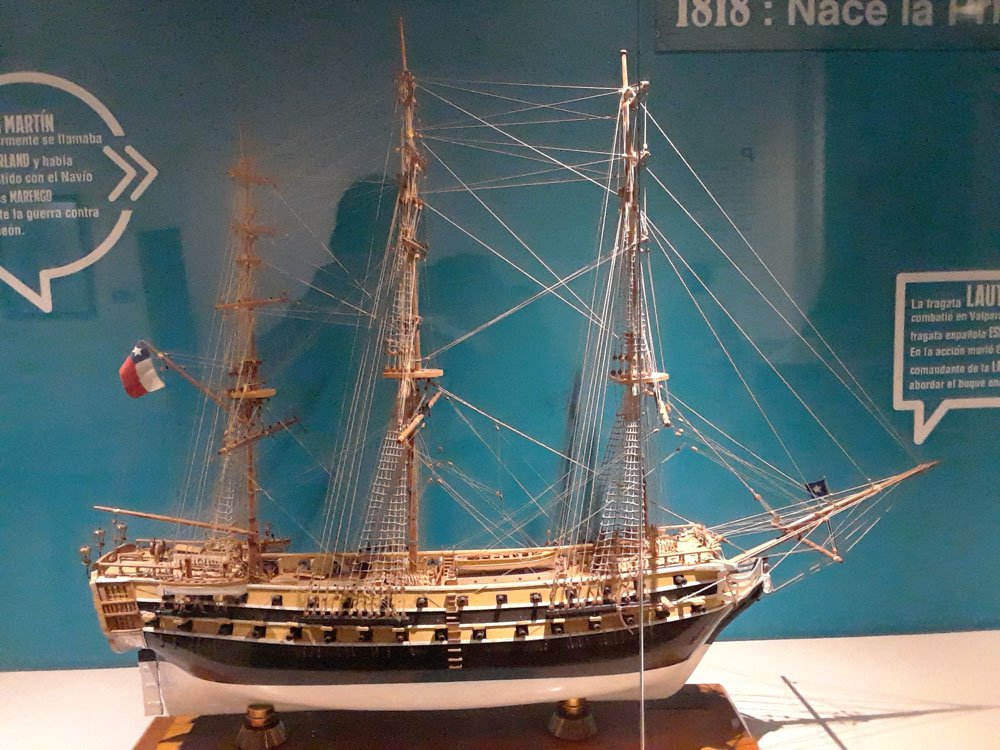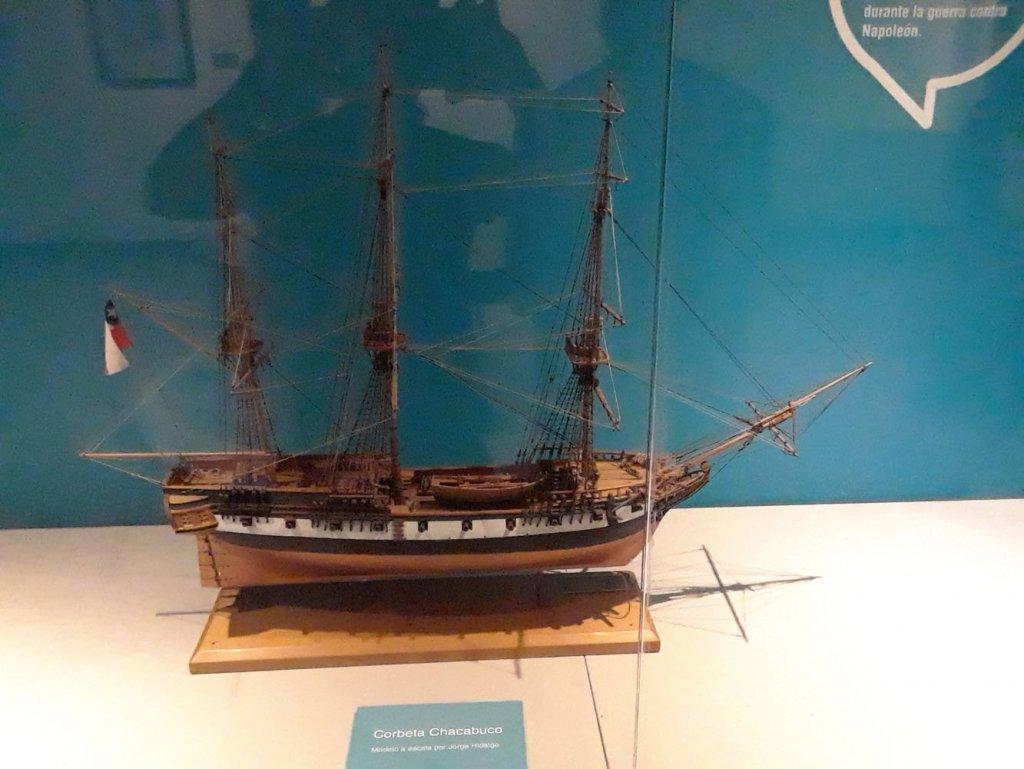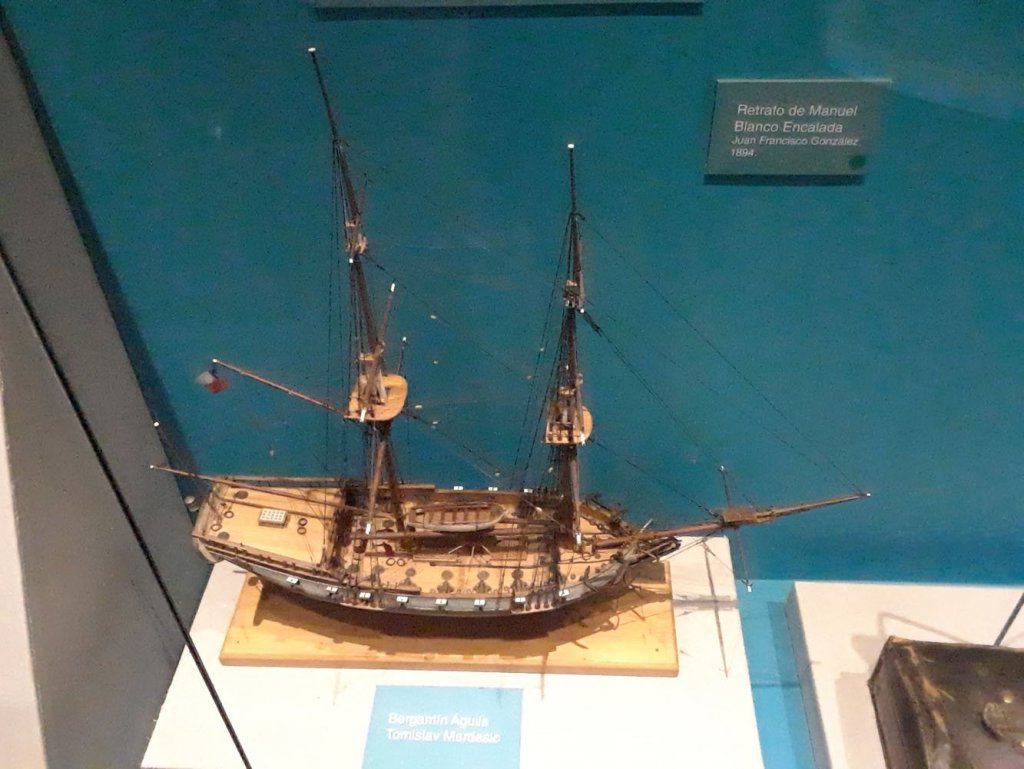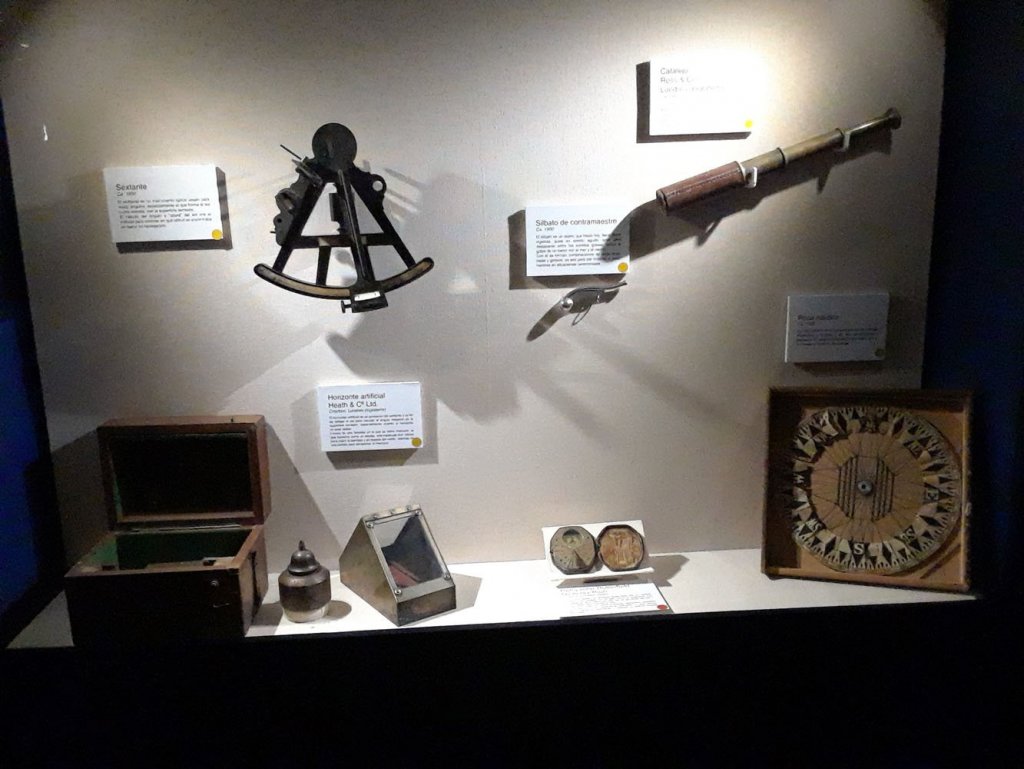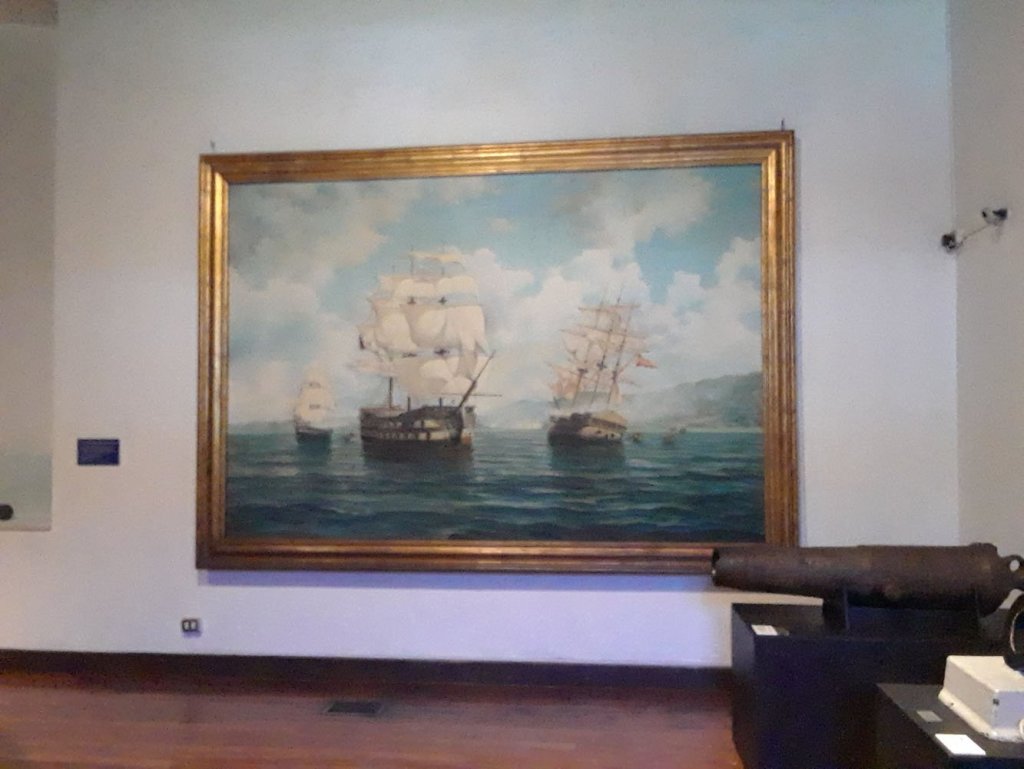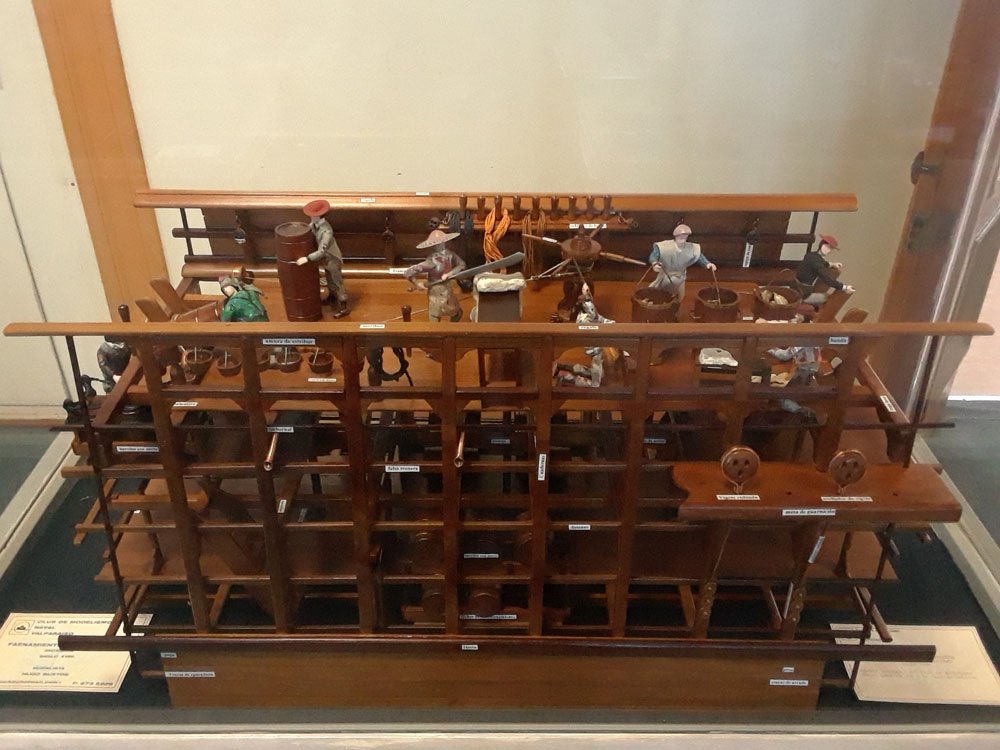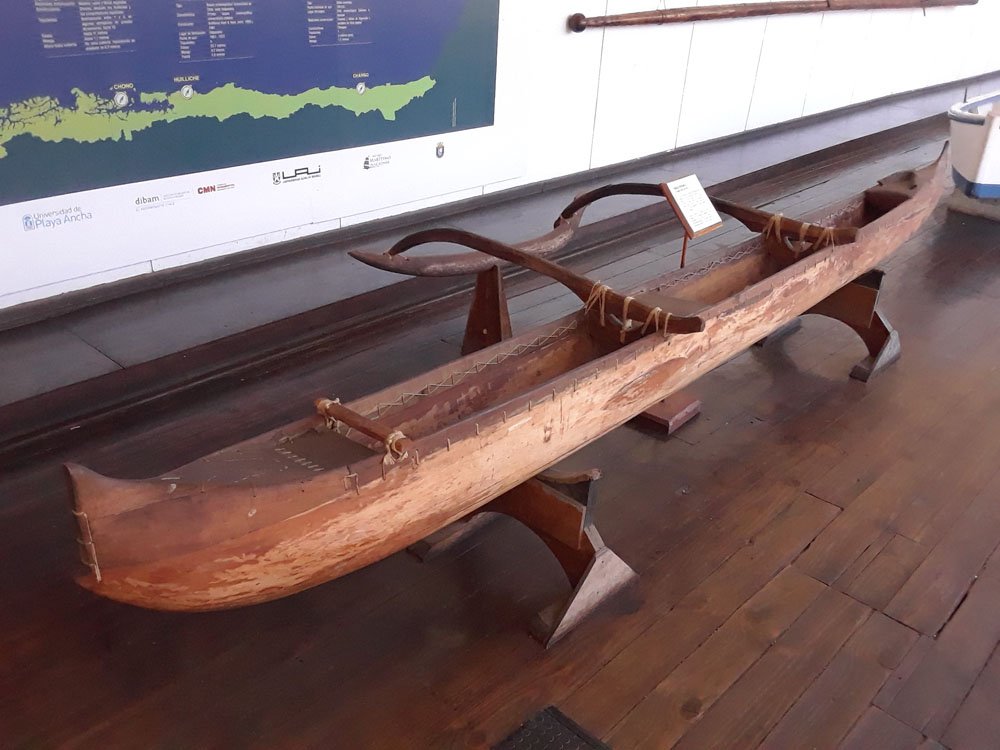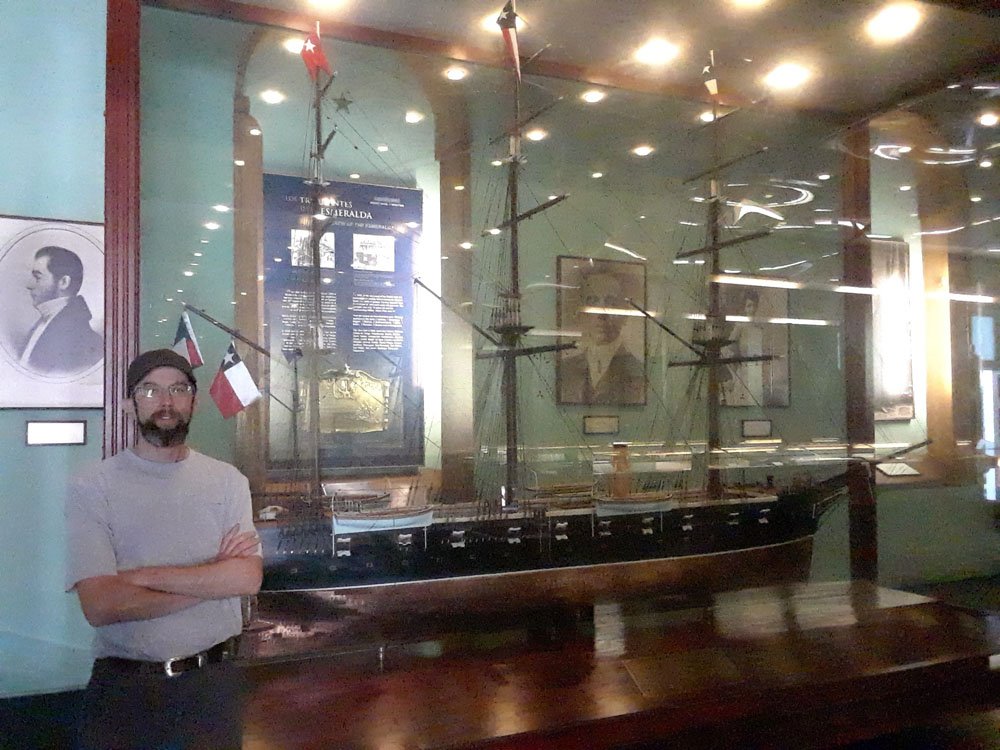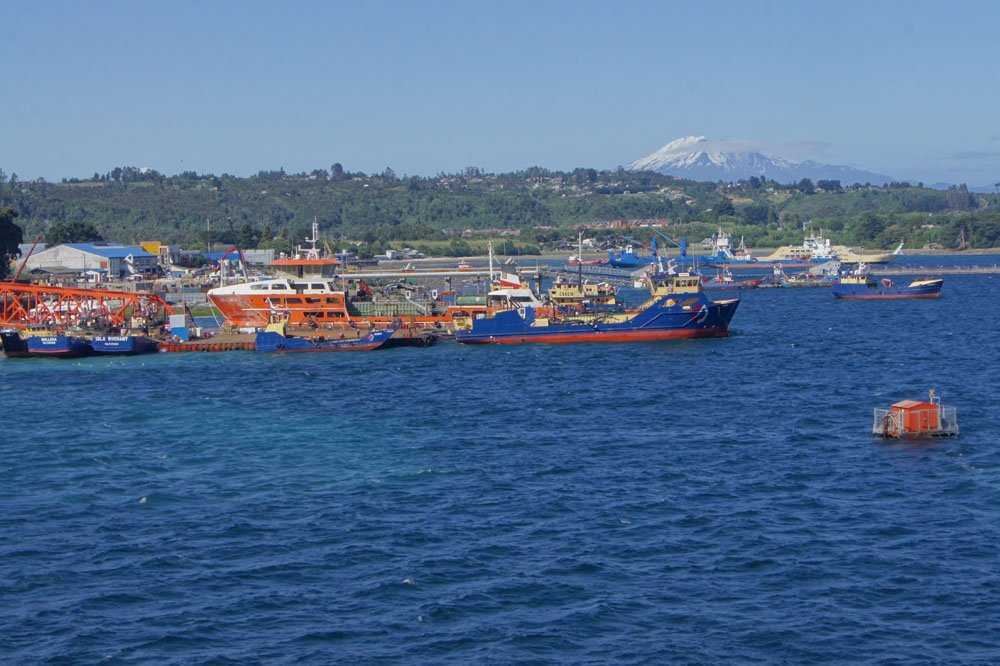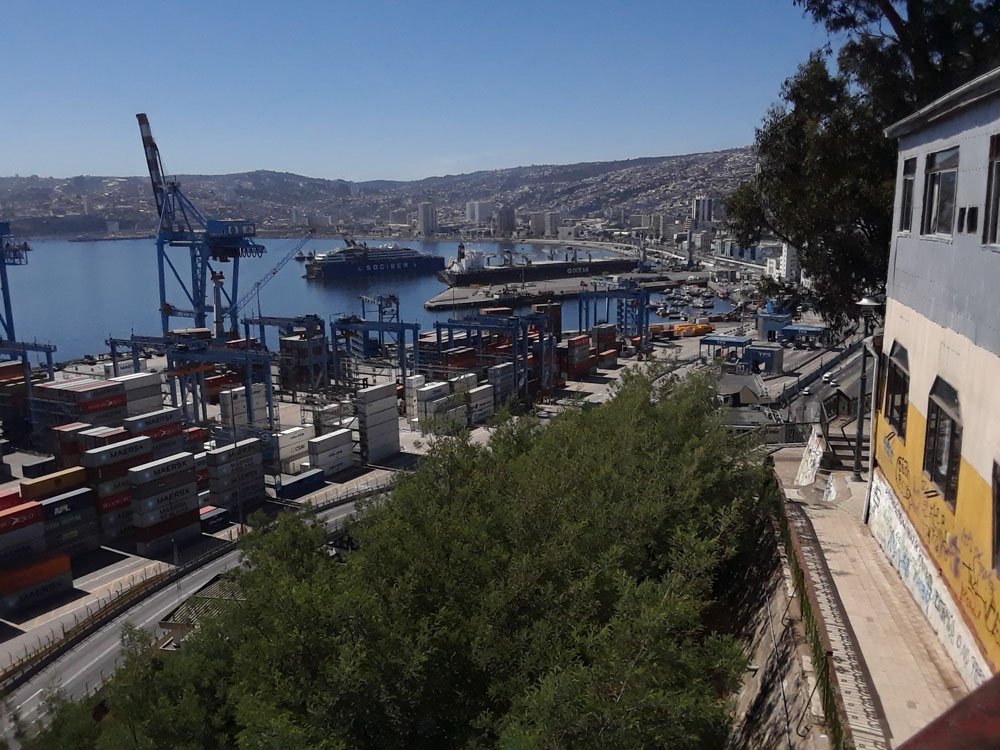-
Posts
3,378 -
Joined
-
Last visited
Content Type
Profiles
Forums
Gallery
Events
Everything posted by Cathead
-
Work has finally commenced on the poor, neglected Arabia. My shoulder is slowly improving with rest; it's still sore but I've been able to cook and do dishes again. Driving my stick-shift truck is probably the most problematic behavior I can't avoid, but since I work at home I only have to do that once a week or so. Most importantly, I can cut, sand, glue, and paint! I decided to tackle the boilers next. See my design thread for a full review of the original components, but below are reposted the two best photos I know of showing the boilers still at the wreck site. The first decision I need to make was how to simulate the rivets joining the roughly 2' wide sheets of iron composing the boiler tubes and the skirting around them. I had already purchased a dowel of the right diameter for the boiler tubes (about 3.5' wide and 24' long). So I dug around in my scrap box and turned up a very thin sheet of scribed styrene originally meant to simulate siding for model railroad buildings. Experimentation showed that the scribing was perfect for allowing the sheets to bend around dowel, so I marked off three pieces necessary to wrap half of each dowel. I did only half because (a) the bottom half won't be seen and (b) this one piece of perfect scrap wasn't big enough to do the rest. Next I experimented with punching divots into the styrene to simulate rivets. I tried a variety of tools, from pointed files to pencils, and finally settled on a small Phillips screwdriver that made nice indentations while being too blunt to go through the material. It was also more ergonomic to use than other options, important since I'd be doing a lot of this. Once I was happy with my method, I carefully measured out 2' increments along the boilers and began punching manually. I think the results look quite good, as seen below. To attach these sheets to the boiler dowels, I laid a line of CA down the middle of each sheet and glued it to the dowel. Once that set, I laid another line of CA along one edge, wrapped and clamped that, then did the other side (see above). This worked nicely, though I had to work quickly to get the clamps set before the CA set. Next I started building a cradle to hold the boiler tubes and support the rest of the boiler structure, as seen below with the finished boilers. Here are the boiler tubes resting in their cradle; you can start to envision the final product. Next, I painted the tubes with the same black I used for the engines. It's a thick Model Shipways paint that does a decent job of blending different materials together and giving a metal-like finish. I'll dull the finish with some pastels. Next, I started expanding the rest of the structure, adding details made of wood and thin styrene to simulate the various furnace doors, ash doors, legs, and other parts of the boiler assembly. I also added sheeting along both sides, using the same rivet-punch technique as the boilers. That's where the boilers stand now. Next, I'll finish adding details and structural elements, finish painting, and weather it with pastels. Then I'll have to decide how much of the detailed piping I want to install, I don't think I can handle all of it, so I'll work out a reasonable simulation. If you go back to the design thread linked above, you'll see what I mean at the stern end of the boilers. Still, I think this looks pretty good for something knocked together from mostly scrap parts, with a sore shoulder. On the finished model, it'll be somewhat buried in the shadows of the main deck, so I don't feel the need to simulate every detail. I'm a big believer in creating the illusion of accuracy rather than counting every rivet. Thanks for sticking with me over the long delay.
- 599 replies
-
- sidewheeler
- arabia
-
(and 4 more)
Tagged with:
-

Exploring the maritime history and geography of Chile
Cathead replied to Cathead's topic in Nautical/Naval History
Continuing south, it's time for one of Chile's greatest maritime experiences, the ferry route to Patagonia. South of Puerto Montt, the mainland breaks up into over 1,000 km of islands, fjords, and mountains capped by two major ice sheets. It's not possible to travel to Chilean Patagonia by land unless you cross the Andes into Argentina, but there is a ferry service that runs through the fjordlands to Puerto Natales. Similar to the Alaskan Ferry system (which I've also used), this is a working service whose primary purpose is to serve communities and locals in the region, but which carries tourists as well to balance the books. The voyage takes four days and three nights, all of which are overloaded with scenery, bird-watching, and of course interesting maritime traffic. The Evangelistas was build in 1978 (about my age) and measures about 115x21 m with a draft under 5 m. She takes many hours to load with trucks, trailers, and other cargo, which seasonally can include livestock from Patagonian ranches. Above, you see the stern-loading ramp extending to shore at Puerto Montt. She also carries around 300 passengers (both tourists and regional residents) and 40 crew. A different, but similar Navimag ferry encountered on the voyage gives a rough sense of context. I never got a shot of the Evangelistas, though she's easy to Google if you want to, because we didn't have a chance while boarding and we didn't disembark until after dark (and she sailed the next morning before we got back down to the harbor). Puerto Montt, like Valparaiso, is chock full of interesting shipping. In many ways, visiting Chilean ports felt like time traveling back 70 or 100 years, because there's so much greater diversity in the size and nature of the shipping, and much more cargo handling is done by hand or small crane. Everything from small-medium ocean-going freighters to little flat-bottomed lighters shuttling things all over the harbor; it was a bustle of activity that felt very different from modern US ports with their super-large shipping. I could have spent all day watching this. The Orca Yagan, which is listed online as a Fish Carrier. I assume this means it services the myriad salmon farms spread throughout Chilean Patagonia. I'm not a big fan of fish farming, but this was a very attractive vessel, especially clean and well-kept. This neat little tug was hovering around the ferry, bobbing like a cork in the tiniest waves. We saw a lot of ships of this general type; I have no idea what they are, but most had lots of piping and equipment on their rear decks, suggesting they aren't cargo ships. There's oil and gas exploration in southern Patagonia, but not in the fjordland area, so I don't know what these are. The wreck of a Greek freighter, I believe from the 1950s, deep in a remote Patagonian fjord. It's sitting on solid ground, a sunken hilltop that forms a dangerous reef in the middle of the fjord. We particularly enjoyed being allowed to visit the bridge. They have a modern navigation system shoehorned in at far right, but are clearly comfortable with older methods of navigation. There's a big chart table that has a full set of charts always at the ready, which we enjoyed poring over. Some of these fjords are over 600 m deep, often deeper than they are wide. Patagonian wind earns its reputation. Here, it was screaming from astern and whipping sheets of spray off the water into walls of mist that carried forward like curtains. With the sun at the correct angle, beautiful rainbows arced from the bow. Very few people saw this, as most were huddled indoors. We spent 95% of our time on deck regardless of weather and were rewarded with wonderful experiences like this, as well as all sorts of good birds and other marine life (like the relatively rare Chilean dolphin along with albatrosses and skuas). Arriving in Puerto Natales in southern Chilean Patagonia, we had to wait for this Navimag freighter to clear the one loading dock. Everything was delayed because the wind was too strong to allow safe departure or arrival; we circled the harbor for hours waiting for it to die down with evening. We didn't disembark until after 11pm, dark even in high-latitude summer, but the sunset over the town and harbor gave glorious light. Just astern of the freighter is another patrol boat very similar to the one shown above in Valdivia. In the next installment, we'll head further south to Punta Arenas on the Straights of Magellen, and an amazing museum with full-size replicas of historic ships. -
Ooh, she's pretty. Love the multi-wood effect.
- 171 replies
-
- artesania latina
- bounty
-
(and 1 more)
Tagged with:
-
Like Bob, I just found your log with your latest update. Your work looks great, I'm sorry I've missed following along so far. It's nice to see another good Chaperon build.
- 76 replies
-
- model shipways
- chaperon
-
(and 1 more)
Tagged with:
-

Exploring the maritime history and geography of Chile
Cathead replied to Cathead's topic in Nautical/Naval History
Valdivia has other nautical attractions in addition to the forts. The town's waterfront hosts a variety of tour boats that visit the forts by sea as well as exploring a large nature reserve upriver. The large structure at center is the town's market, where a wonderful mix of fresh produce, cheese, and seafood are sold. The seafood stalls back up to the water, making disposal of offal and other fresh refuse easy. Chile's fresh seafood is one of the country's greatest assets to a visitor. Lest this seem wasteful or polluting, a large population of gulls and sea lions happily takes care of anything going over the side: Among the interesting vessels tied up along the waterfront, we found an old Chilean Navy submarine (open for tours, but not when we were there) and this modern patrol vessel: The region also hosted many interesting fishing boats. Most noticeable were a distinct style of open boat, always painted red and yellow, an example of which I saw in the Valparaiso Museuo Naval. These, however, were often rigged with simple triangular sails. Looking out to sea from the Niebla Fort, I could see a series of these far out with their sails rigged, but my camera wasn't good enough to capture them. Here are two not-so-great photos of the type in harbor: I wanted to learn more about these, but couldn't get clear answers from local fishermen. When I asked what they were called, for example, all I could get was "lancha", which is a generic Spanish word for "launch" or "boat". Online searches have turned up nothing more (not even better photos), and my Spanish isn't good enough to dig deep into historical archives. If/when I return, I'd like to focus on learning more about these; they were the first time I've ever seen sail-based fishing boats in actual operation. They'd make a really interesting modeling project if I could get enough information and better photos. Much of this part of the coast reminded me of northern California or southern Oregon, with rocky headlands separating beaches and isolated fishing villages. A particularly nice location is Curiñanco, to the north, where a nature reserve protects huge old trees on steep slopes above the water and a rocky beach generates beautiful waves and preserves some really interesting bedrock geology (what looked to us like deposits from past tsunamis along this very tectonically active coast). -
What you're doing IS therapy. Most of us benefit from the ability to obsess over something harmless, such as hobbies or sports, or reality can overwhelm us. Having recently visited Valparaiso, where Essex was captured, my interest in following a build of her has been heightened and I'll look forward to learning from this one.
-

Exploring the maritime history and geography of Chile
Cathead replied to Cathead's topic in Nautical/Naval History
Next up, the southern coastal port of Valdivia, probably my favorite town in Chile. Founded by the Spanish in 1552 on at the junction of several rivers, maybe 10 km upriver from the Pacific Ocean, it's chock full of nautical interest. The site was inhabited long before the Spanish, given its excellent location and abundant natural resources, and played a key role in the Chilean War of Independence. I'm going to cover this in two posts, given how much there is to say and show, and this will still only be a brief summary. Part I: The Valdivian fort system At the river's mouth, the Spanish built a network of coastal forts that made Valdivia the best-defended port in the country. These were upgraded in the late 18th century. Interlocking fields of fire and a narrow navigational channel meant the area was considered impregnable, yet the southern forts were stormed in 1820 by Chilean forces under the command of Lord Thomas Cochrane (model for Patrick O'Brien's Jack Aubrey) during the Chilean War of Independence. This action was fictionalized in the final novel of Bernard Cornwell's excellent Sharpe series. Two of these forts are open to the public today, including the Castillo de Niebla on the north shore, which has excellent interpretive material and sweeping views across the bay: Above, you're looking upriver toward Valdivia (10 km inland). The low ground along the left half of the image was carved out of the bedrock promontory by the Spanish, creating a moat that isolated the rest of the fortress to the right. Even accounting for the fairly soft sandstone here, it's an impressive engineering feat and creates a really unique setting. A reconstructed building surrounded by original foundations. Inside are very well-done interpretive materials including more nice ship models. A view across Corral Bay, aimed a bit farther left (east) than the photo I used in the introductory post to this series. Here you can see two shot furnaces serving the cannons; the magazine was carved out of the bedrock further to the left. Originally, the protective walls (can't remember the right term) were sandstone, but were worn away by centuries of visitors, so they reconstructed some on the left and while the right side remains in its worn-down state. Some of the cannons are originals, too, according to the interpretive materials. Across the bay at center, though it's hard to pick out, is the Castillo de San Sebastián de la Cruz Fort (more commonly called the Corral Fort), the other location open to the public. To the right, the rest of the network's forts spread along south shore out of view (again, see photo in first post). Another view of Niebla's main battery. I liked the juxtaposition of the modern freighter in the background with the old Spanish cannons. In both photos, notice the angled slots carved into the rock floor on both sides of each cannon emplacement. The interpretive materials state that these were for rolling heated shot to the cannon mouths, which makes a certain amount of sense, though to my mind it doesn't explain why you need slots on both sides for every emplacement (I wouldn't think anyone carrying heated shot would run around to the far side). I had initially thought the slots were meant to ensure each cannon stayed in its "lane", given that they perfectly match what would seem to be the maximum traverse and there didn't seem to be any allowance or need for other rigging (as on a warship). Any further input from more knowledgeable folks? I don't know much about fortress design. And here's the opposite view, looking north from the Corral Fort back at Niebla (from the guard tower, count back four cannon emplacements and the Niebla Fort is directly above). This fort is a bit more run down and has no interpretation, but it's a fascinating visit nonetheless. You can tell the Spanish never expected an overland attack here, everything is aimed toward the sea. They assumed the rugged coastline and hills would keep land troops away, but they didn't expect Cochrane's creativity and the Chilean forces' zeal. If I recall correctly, this fort and Niebla never even put up a fight, once the first few forts along the coast had fallen, the Spanish garrisons here up and fled. In their defense, this was a godforsaken posting at the end of the world, the Spanish empire was reeling, and there wasn't a lot of reason to die here. And here are the Catheads centuries later. I thought it was interesting that all the cannons here were on naval-type carriages, while all the cannons at Niebla were on army-style carriages. None of the interpretive materials went into detail on such things, so it's not clear if the carriages are meant to represent original forms or are somewhat random. Note that here, there were no slots around the gun emplacements, which could have several explanations. One, I didn't see any shot furnaces here, which I thought was odd, so if the Niebla slots were primarily for shot that would fit. Two, did this carriage design recoil sideways less than the ones at Niebla and/or have more rigging, so didn't need guidance slots? I don't know. It's interesting that here the ground is paved in rough stone, as opposed to the natural sandstone surface at Niebla. Lots of differences for forts so close to each other and from the same era. In the next post, I'll leave the forts behind and explore some other interesting aspects of the Valdivia era. Thanks for reading. UPDATE: Just realized I completely forgot that there's a third fort you can visit, on the Isla Mancera that sits in the bay just upstream of Niebla. We didn't get there because we ran out of time doing the first two, and boats to the island run less frequently than boats across the bay between Niebla and Corral. But anyone visiting should certainly try to do all three. -
Woohoo! Great news all around. Cheer up, a nicely packed train won't give you room to drop it! Congratulations on recovery and what sounds like a lovely holiday.
-

Steamboats and other rivercraft - general discussion
Cathead replied to Cathead's topic in Nautical/Naval History
Good stuff, that's really fascinating. Cool how these boats were simultaneously unique and yet developed some of the same approaches as other regions (like relying on stern wheels in tight or debris-prone areas). I love that last centerwheel one, reminds me of a similar design that operated as a ferry on the Missouri River at St. Joseph, MO in the 1850s.- 281 replies
-
- Steamboats
- riverboats
-
(and 3 more)
Tagged with:
-

Exploring the maritime history and geography of Chile
Cathead replied to Cathead's topic in Nautical/Naval History
A major highlight of Valparaiso (Chile's main port) is the fantastic Museo Naval, which chronicles the country's maritime history in a beautiful building that, as I recall, used to be their Naval Academy. In classic Spanish style, it consists of a multi-level structure wrapped around a central courtyard with rooms on both floors dedicated to different themes: Hiding at the back is what's labelled as the last-built wooden fishing boat of a specifically Chilean design. I somehow failed to get a better photo of this, which I deeply regretted once I started seeing many of these still in use further south but couldn't get as close. Just out of the photo to the right is one of the Fénix capsules developed by the Chilean Navy and NASA to rescue the miners trapped by the world-famous 2010 Copiapó mining accident. This was really interesting to examine, and I enjoyed watching a small boy playing in it. One of the first rooms features a set of beautiful stained-glass windows made for the museum. Two depict a maritime globe, and three depict heroes of Chilean naval history. The photo above is of Lord Thomas Cochrane, likely of particular interest to many readers here. There are many displays of nautical artifacts; I found these particularly fun. A HUGE painting depicts a naval victory over the Spanish during the War of Independence. There are also many, many interesting ship models, of which I focused my photography on those from the War of Independence era (of most personal interest). Follow the link to learn more about their origins (photos below). The battleship San Martin The corvette Chacabuco The frigate Lautaro. Lautaro was a famous indigenous leader in Chile from the 1500s who led the Mapuche resistance against the Spanish. Interestingly, the Mapuche maintained their independence throughout the Spanish era and well into modern Chilean history, a near-unique achievement in the New World. The brigantine Araucano (an older Spanish word for the Mapuche, which appears in various forms all over Chile). The brigantine Aguila (Eagle). A separate room feature 20+ models from the Valparaiso modelling club. I couldn't photograph them all, but thought this cross-sectional diorama of a Spanish whaling vessel was particularly interesting as I've only ever thought about the English and American kinds. A Rapa Nui canoe from the now-Chilean territory now known as Easter Island. We would find more examples of indigenous craft elsewhere, but this was the only one here. Finally, a broader panorama of the Valparaiso waterfront that captures its diversity and visual interest, taken near the entrance to the museum. There's so much more I didn't share, including other maps, photos, drawings, paintings, articles, and displays dealing with fishing, exploration, recreational sailing, and so on. We spent hours there without getting bored, and I can't recommend it enough if you're lucky enough to get here. I left out the photo of the huge Esmerelda model shown in the first post of this series, but it and its companion Huascar are also fantastic. -
Hey, Mark, sorry if my response came across as snarky toward you. Any bitterness there came from my disgust with bipartisan failures in health care, not your reasonable suggestion. Don't need to go any further down that road. For now it's just rest and see; I give it an 80% likelihood of being ok in a few weeks with no more than heating pads, occasional Advil, and thankfulness that I already split this year's firewood stock (I use a maul, not a power splitter). I need time to plan out the superstructure properly anyway and work out my next wood order.
- 599 replies
-
- sidewheeler
- arabia
-
(and 4 more)
Tagged with:
-
Hah, Mark, you're funny. This is the US we're talking about, we have a $13,000 deductible and very limited access to affordable "medical types". There's no way I'm going for medical advice unless this gets MUCH worse. It takes a lot of pain before I'll start spending my hard-earned, self-employed money funding doctors' and health insurance executives' lifestyles. Plus our insurance company will change on January 1st due to more brilliance in the American medical system, so if I go in now I'm going to end up fighting with two difference insurance companies. Much better to just wait two weeks and see what happens; if it isn't healing on its own by then, at least I'll only be dealing with the 2019 company.
- 599 replies
-
- sidewheeler
- arabia
-
(and 4 more)
Tagged with:
-

Exploring the maritime history and geography of Chile
Cathead replied to Cathead's topic in Nautical/Naval History
Yeah, I was referring to areas further south like Chillan and Concepcion with regard to the earthquake. Just mean that Chilean cities have rebuilt from a variety of disasters. Sorry for the unclear phrasing. -

Exploring the maritime history and geography of Chile
Cathead replied to Cathead's topic in Nautical/Naval History
Honestly, you'd never know the fire had happened unless you knew the area beforehand. Similar to the areas devastated by the 2010 earthquake (8.8), they've done a great job cleaning up and rebuilding. -
Hello all, we're back from spending a month exploring Chile. I've started a separate thread about the maritime history and geology of Chile because we collected so many photographs and so much information that I think will be of interest to many MSW readers. So please feel free to go check that out. In the meantime, I'm not sure when I'll be getting back to the Arabia. Not only do the next few weeks look especially crammed as I get back to work in what is traditionally a very busy period for me, but I also hurt my shoulder in the mountains of Patagonia when a very strong gust of wind literally plucked me off my feet and threw me about 10-15' onto some rocks. I get strange pain and numbness when I try to use my right arm for many motions from chopping vegetables to washing dishes to lifting things, so model work is out for the moment. Luckily, typing holds the shoulder steady and doesn't seem to cause problems, and I'm hoping that a week or two of relative inactivity (i.e. not carrying backpacks around South America) will heal it. That's especially unfortunate as Chile has given me a whole new set of interesting modeling topics to consider, and I'm itching to finish the Arabia and move on to one of them! I think my original estimate of getting back to the project after the New Year is still realistic. Sorry for the ongoing delay, hope the Chile series is of interest in the meantime.
- 599 replies
-
- sidewheeler
- arabia
-
(and 4 more)
Tagged with:
-
Chile’s coastline extends more than 4,000 km along the Pacific Ocean, wrapping around to the South Atlantic in southern Patagonia (not to mention Chile’s territorial claims in Antarctica). The country has a fascinating and diverse maritime history, including the unique boats used by indigenous peoples, its largely naval War of Independence against Spain (strongly influenced by British involvement), its later naval victory over Peru that cemented the region’s modern boundaries, its prominent role in influencing Charles Darwin’s evolving understanding of natural and geological history before he ever reached the Galapagos, its little-appreciated role in the final rescue of Shackleton's stranded crew in Antarctica, and the vast maritime resources such as rich fisheries available to the modern country. Mrs. Cathead and I recently spend a month exploring the southern half of Chile (from Santiago to southern Patagonia), living out of our backpacks while using local buses and hostels to get closer to the landscape and people. We encountered and investigated many locations of maritime interest, and will share some photos, stories, and information in this thread in hopes of inspiring others to learn more about (and visit) this nautically fascinating country. This won’t be a full travelogue (for example, I’ll be leaving out all the time we spent hiking in the Andes and otherwise botanizing and geologizing inland), but a series of posts focusing on specific locations and/or themes of potential interest to MSW readers. Here are a few images as teasers, all of which will be expanded upon in subsequent posts. Valparaiso, Chile's main seaport and a great place for modern ship-watching as well as host to a fantastic naval museum. The place is absolutely marinating in nautical history and diversity. Ship models are everywhere in Chile, including this huge example of the Esmerelda, perhaps Chile's most famous warship. She sank in 1879 while engaging the more modern Peruvian ironclad Huáscar during the Battle of Iquique, sparking a patriotic furor that drove Chile's subsequent victory in that war as well as immortalizing her captain, Arturo Prat, to near-godlike status in Chile. View south across Corral Bay from the Castillo de Niebla, a beautifully preserved Spanish coastal fortress. On the far shore lie the remains of five other Spanish fortresses stormed in 1820 by Chilean forces under the command of Lord Thomas Cochrane (model for Patrick O'Brien's Jack Aubrey) during the Chilean War of Independence. This action was fictionalized in the final novel of Bernard Cornwell's excellent Sharpe series. Diverse shipping in Puerto Montt, with Volcán Calbuco in the background. Modern Chile features a fascinating array of interesting ships of many sizes and uses, far more varied than most US ports I've visited. A full-scale replica of HMS Beagle, the first in the world to my knowledge, in southern Patagonia. Part of a private museum featuring other full-scale replicas of famous vessels including Magellan's Nao Victoria and Shackleton's James Caird. I hope readers will enjoy the subsequent entries in this topic. I'll try to answer any questions that may arise, or perhaps someone more knowledgeable will chime in (and correct me if necessary). This trip certainly provided me with a series of new modeling possibilities, more than I'll ever be able to tackle.
-
Just so you all know, there won't be any updates to this build for a while. Mrs. Cathead and I are about to leave on an overseas vacation (first time we've left the country in 14 years), and have been extra busy preparing for that. I thought I might get a bit more done beforehand, but that hasn't happened. I don't think I'll be returning to this build until close to the New Year given this trip and various other commitments. Sorry to leave you all hanging. I will have some stories and photos of nautical interest to share when I return. Thanks so much for reading and for being patient with the long upcoming delay.
- 599 replies
-
- sidewheeler
- arabia
-
(and 4 more)
Tagged with:
-
Yes, you should be able to bend them first. In fact, many folks recommend fully bending planks before doing any gluing; the idea is that the bent plank should hold its shape and need almost no clamping once you're ready to glue it on. That's how I do it. Be careful pre-painting, as the paint's moisture can change the curve if you use too much.
-
Catching up on this log, you've certainly discovered some of the ways that Corel finds to drive modelers mad (like poor quality materials and instructions). As for your rigging line, the standing rigging certainly would have been tarred. I'd recommend replacing it with something higher quality than what Corel provides (such as line from Syren). As for bending tough planks, I've found that doing it in several stages can help. Soak the wood first, then bend it through part of the curve off the model by setting up a template or other bending station. Let it dry and take that gentler curve, then resoak and work it toward the tighter curve. I use a hair dryer once the wet wood is clamped in place, the extra heat dries it fast and seems to help set the fibres in their new position. This kit certainly looks like a challenge, between the small scale and the manufacturer. You're soldiering on admirably!
-
Mark, you're thinking of the 1811-1812 New Madrid earthquakes (for what it's worth to other readers, pronounced by locals as MADrid with the first syllable rhyming with dad or glad). River channel movement is common in any system that has a relatively low gradient and isn't constrained by bedrock. It's dramatic in the history of the Mississippi River basin, but it's certainly not confined to that system, it's a completely normal geologic process. EDIT: I'd meant to mark the one-year anniversary of this build on October 22, and just realized that I completely missed it. Luckily I'm far better with real anniversaries. I'm not as far along as I thought I'd be, so who knows how long this will take to complete. There's a lot of intricate work yet to be done.
- 599 replies
-
- sidewheeler
- arabia
-
(and 4 more)
Tagged with:
-
The wheels are mostly done. Assembling the three rings into a coherent, well-aligned whole was extremely difficult. It was made worse by the fact that I wasn't as precise as I thought in keeping all three built to the same pattern; even very slight misalignments of the spokes led to difficult problems. First, I made spacers to hold the rings the proper distance apart, and spent lots of time spinning and testing the rings to find the best alignment. Some spokes needed filing or filling to get the buckets (the paddle planks) reasonably aligned. These changes looked terrible as I made them but they really fade into the background with painting and with the complexity of the wheel as a whole. Plus, I made a point of not modifying the outer ring, the only one that's really visible. As previously discussed, I built the port wheel at about 40% completion as everything above that will be invisible. Here are four pictures of the completed 1.4 wheels test-installed on the model. I think they look pretty good for scratchbuilt wheels, and am very, VERY glad to be past this portion of the project. I want to do some more weathering and I haven't yet decided how to install or simulate all the iron bolts that hold each bucket to each spoke. More on that later. Thanks for reading!
- 599 replies
-
- sidewheeler
- arabia
-
(and 4 more)
Tagged with:
-

Purpose of tall mast on bow of riverboat
Cathead replied to Shotlocker's topic in Masting, rigging and sails
Chuck is correct, it's a navigational aid. The forward mast isn't for gauging obstacle height; by the time that encountered a bridge the boat wouldn't have time to stop or turn before knocking the stacks off. Once bridges became common, steamboats started being built with hinged stacks that could be lowered while passing underneath. In the meantime, the legal battles between railroad and steamboat interests over bridges were epic and bitter. The R.E.Lee was a Mississippi River boat that would have had no need for grasshopper spars as that river was deep enough to avoid the need; grasshoppers were a unique feature of the Missouri and other shallow Western (i.e., Plains) rivers. There were some differences in design between Mississippi and Missouri River boats, in that upper Missouri (i.e beyond Omaha) boats tended to be sternwheelers (better for shallow water and more protection for the wheel from copious river debris), have much narrower or non-existent guards (extensions of the deck beyond the hull), and/or have stripped-down superstructures to reduce their draft and exposure to high winds. Good initial question, and nice looking model! -
I have no experience with decals, sorry. The one time I put a name on a ship's stern, I did it by printing out a full nameplate and affixing that to a thin sheet of wood. See the linked build log for the revenue cutter in my signature. Maybe not authentic but looked better than anything else I tried.
- 53 replies
-
- rattlesnake
- model shipways
-
(and 1 more)
Tagged with:
About us
Modelshipworld - Advancing Ship Modeling through Research
SSL Secured
Your security is important for us so this Website is SSL-Secured
NRG Mailing Address
Nautical Research Guild
237 South Lincoln Street
Westmont IL, 60559-1917
Model Ship World ® and the MSW logo are Registered Trademarks, and belong to the Nautical Research Guild (United States Patent and Trademark Office: No. 6,929,264 & No. 6,929,274, registered Dec. 20, 2022)
Helpful Links
About the NRG
If you enjoy building ship models that are historically accurate as well as beautiful, then The Nautical Research Guild (NRG) is just right for you.
The Guild is a non-profit educational organization whose mission is to “Advance Ship Modeling Through Research”. We provide support to our members in their efforts to raise the quality of their model ships.
The Nautical Research Guild has published our world-renowned quarterly magazine, The Nautical Research Journal, since 1955. The pages of the Journal are full of articles by accomplished ship modelers who show you how they create those exquisite details on their models, and by maritime historians who show you the correct details to build. The Journal is available in both print and digital editions. Go to the NRG web site (www.thenrg.org) to download a complimentary digital copy of the Journal. The NRG also publishes plan sets, books and compilations of back issues of the Journal and the former Ships in Scale and Model Ship Builder magazines.


